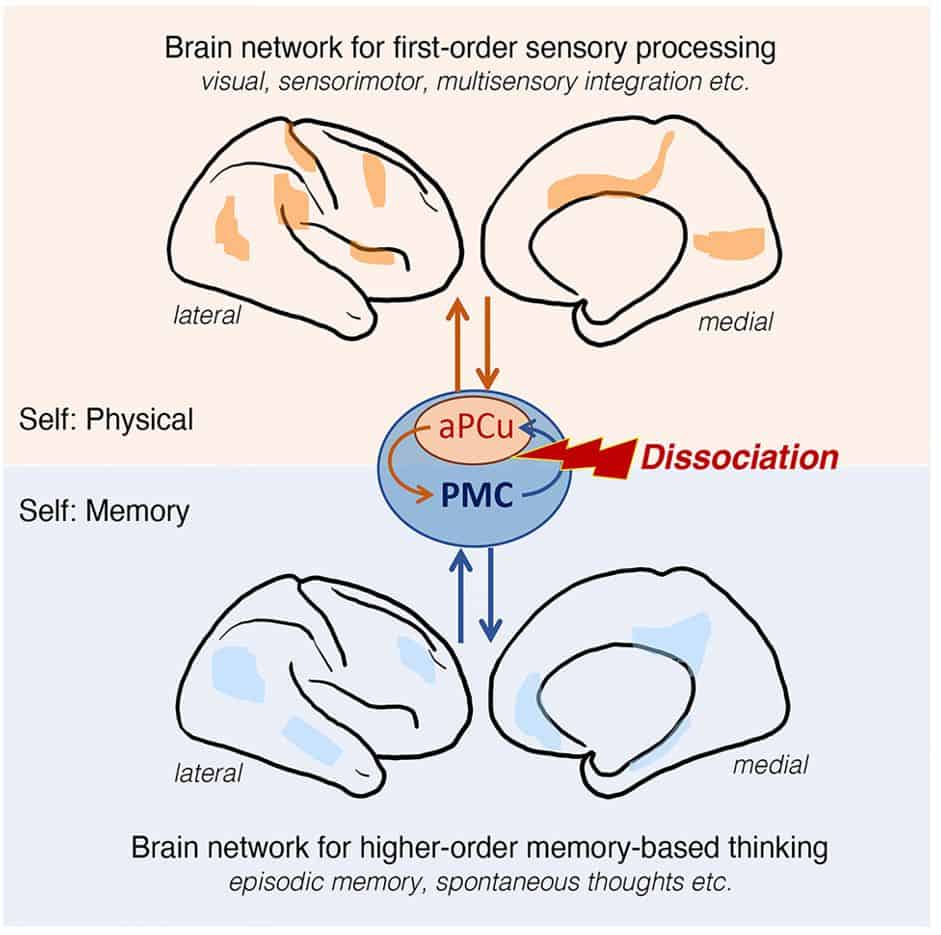Delve into the fascinating world of self-perception as neuroscience investigates the intricate neural processes underlying our sense of self.
Rewriting Reality: New research unveils the surprising role of a small structure sandwiched between the brain’s two hemispheres.
Have you ever wondered where the interesting character called “I” lives in the brain?
Dr. Josef Parvizi, a renowned physician-scientist at Stanford Medicine, has unveiled intriguing insights about its precise location.
Despite the brain’s inner workings being hidden from view even if skulls were see-through, Dr. Parvizi has developed techniques to delve into the human brain and uncover its mysteries. His extensive research has identified particular areas of the brain that are integral to various functions, such as face recognition and number comprehension.
In a recent publication in the scientific journal Neuron, Dr. Parvizi detailed the unexpected importance of a petite structure nestled between the two hemispheres of the brain. This structure, known as the anterior precuneus (aPCu), serves as the hub of a network of interconnected brain regions. These regions operate in harmony, their activity rising and falling in synchrony, suggestive of a cooperative effort. This phenomenon plays a critical role in shaping our understanding of our positioning in the world, which is further supported by observations of people’s altered spatial awareness when their aPCu is manipulated.
Working alongside postdoctoral scholar Dr. Dian Lu, Dr. Parvizi and his team discovered that this network of cooperating brain regions, led by the aPCu, plays a fundamental role in synthesizing information about your location, movement, and physical sensations. This intricate process forms a cognitive representation of your physical self.
To emphasize the system’s profound significance, Dr. Parvizi referred to the intriguing duo of “I” and “me.”

“For every action we take, even during dreams,” he commented, “there’s always an agent behind it: We call that agent ‘I’. ‘Me’ is everything we have stored in our memories about the ‘I'”.
The Duality of Self
Neuroanatomically, two distinct clusters of brain structures govern the sense of self, and these systems continuously interact with each other.
The physical or bodily sense of self, referred to as “I,” starkly contrasts with the narrative aspect of self, known as “me.” The narrative self involves active or passive contemplation of one’s past life, future plans, memories, habits, personality, emotions, feelings for others, and anticipation of what lies ahead.
The narrative self, or “me,” predominantly resides within a well-studied network called the default mode network. (Although to non-specialists, the terms “default,” “mode,” and “network” may sound like an off-key trio of random words, they hold significance. The term designates a brain network that engages when we daydream, reminisce about past events, and so on.)
On the other hand, the bodily-self network, while known to exist, lacks an official designation. Previous studies have identified a set of structures constituting this network but have provided limited insights into its apparent centerpiece, the aPCu.
To further delineate the brain network governed by the aPCu, Dr. Parvizi’s team collected brain imaging data from five patient participants as well as nearly 1,000 participants involved in the Human Connectome Project, initiated in 2010 to map neural connections in the human brain.
“We’ve shown the precise location of key cells in the aPCu and, Dian’s map clearly shows how they connect with the rest of the brain,” explained Dr. Parvizi.
The aPCu is situated close to a brain structure considered a critical node in the default mode network. However, despite intense communication with this network, the aPCu itself is not a part of it.
“Electrically stimulating the default mode network doesn’t do anything at all to one’s sense of self or consciousness,” clarified Dr. Parvizi.
“Your sense of physical or bodily self represents your organism in the immediate here and now, with a particular point of view that is yours alone, your first-person perspective on the world around you. Nobody shares it,” added Dr. Parvizi. “You may not be conscious of your point of view. But you will be if I disrupt the network that generates it. Your place in the world around you will suddenly seem unreal.”
Exploring the Depths of the Brain
Dr. Parvizi conducts his investigations on patients who are undergoing evaluation for potential surgical intervention to address recurrent, drug-resistant epileptic seizures. Under anesthesia, a neurosurgeon delicately inserts fine needle electrodes into the brain. Over the course of several days, patients remain connected to monitoring equipment as the electrodes capture electrical activity within the brain, relaying the data to a computer. Eventually, this procedure captures the repetitive seizures, enabling neurologists to pinpoint the precise origin of each patient’s seizures within the brain. Many patients experience relief from recurring seizures thanks to this invasive approach.
With the patients’ informed consent, Dr. Parvizi administers minuscule pulses of electrical current through individual electrodes, either stimulating or disrupting activity within specific localized areas of the brain. (It is important to note that the procedure is safe, and the brain does not perceive pain.)
On a particular day, a patient shared, “Every time I have a seizure, I have a sense of depersonalization and dissociation. Everything’s unreal, not happening to me.”
It turned out that this patient’s seizures originated from the aPCu. Intrigued to learn more about this phenomenon, Dr. Parvizi and his colleagues identified eight additional patients with implanted electrodes passing through their aPCu. These patients agreed to undergo controlled disruption of the aPCu’s activity using electrical pulses.
Following the intervention, Dr. Parvizi noted, “All of them reported something weird happening to their sense of physical self. In fact, three of them reported a clear sense of depersonalization, similar to taking psychedelics.”
However, this feeling of detachment did not manifest as an out-of-body experience.
“In an out-of-body experience, you see yourself from the top,” Parvizi added. “Our subjects did not report that at all. They still felt like they’re inside their bodies. But they typically reported a change in their sense of their location and orientation. If the right side of the brain was stimulated, they felt as though they were floating; if the left side was stimulated, they felt as if they were falling. As they looked around, it didn’t make sense. They shouldn’t be floating or sinking, but it felt like they were. The world around them seemed unreal.”
Curiously, the reports of flying or floating versus falling or plunging were accompanied by relatively positive or negative emotions, respectively, depending on whether the right or left aPCu had been electrically stimulated. (Similar to many brain structures, the aPCu is present in both hemispheres of the brain.)
Dr. Parvizi expressed his bewilderment, saying, “Why that happens, I have no clue. I am absolutely puzzled why stimulating the left versus the right side elicits opposite effects, but we’re going to figure that out.”
Image Credit: Getty
